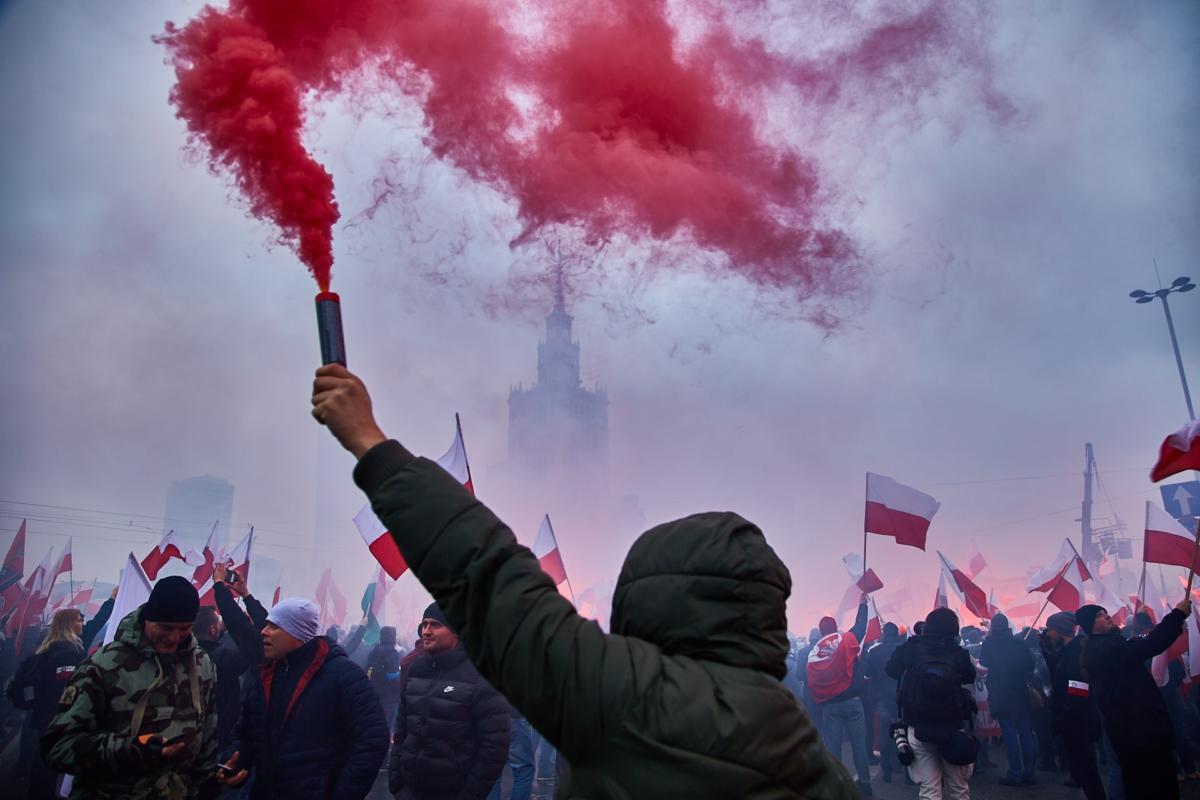
Karolina Plinta: You are making film documentations of demonstrations and various types of street events since 2009, what prompted you to start doing this?
Tomáš Rafa: When I was still a student at the Academy of Fine Arts in Banská Bystrica, the first segregation wall was created in Slovakia. It was in Michalovce in 2009. While still at university, I decided to go there with a camera, register it and react as an artist. So, I played a football match next to the wall with the kids from the Roma settlement. I published the recording of the match on the internet, thus triggering a public discussion. I felt that this way of acting with the camera and the role of the artist suited me very well. At the same time, I was a student of the Academy of Fine Arts in Warsaw, studying in the studio of Professor Grzegorz Kowalski, so I started to be interested in events that were taking place in Poland: marches of nationalists, equality parades. All this seemed interesting to me, so I decided to continue these activities. With time, I also began to notice more and more demonstrations organized by extreme right-wing movements.
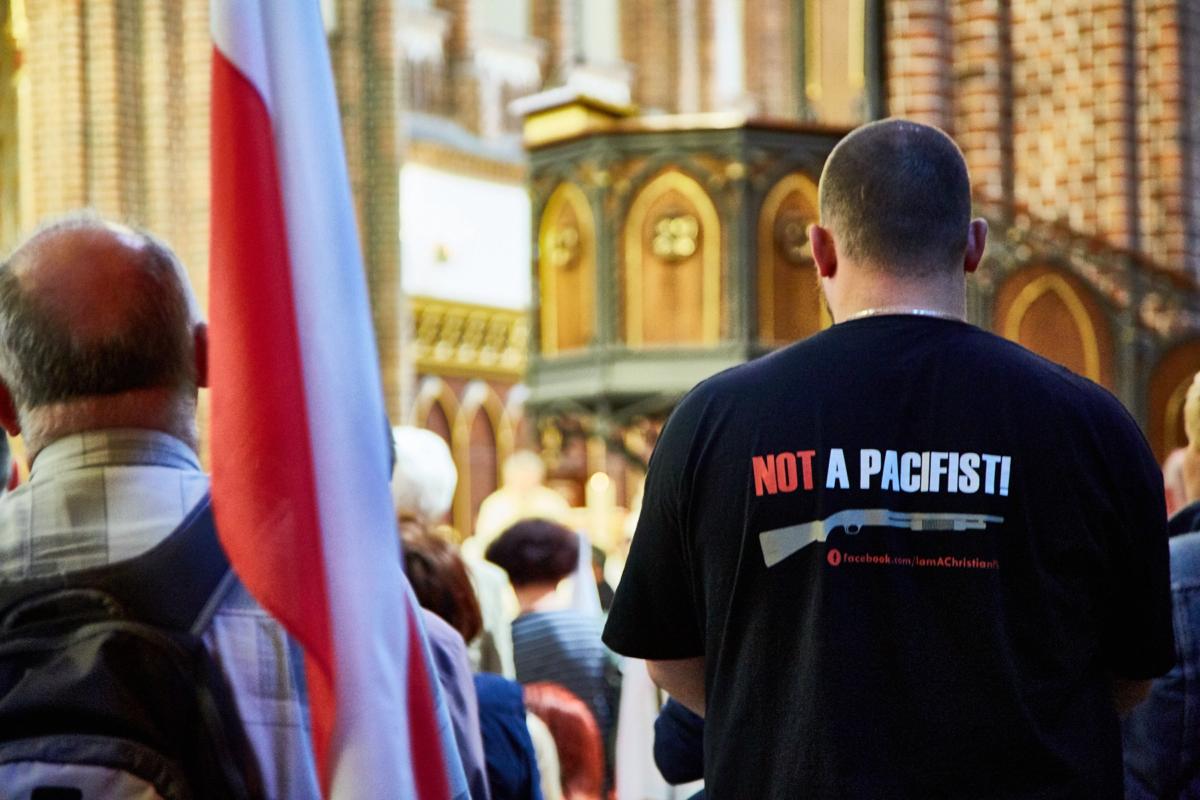
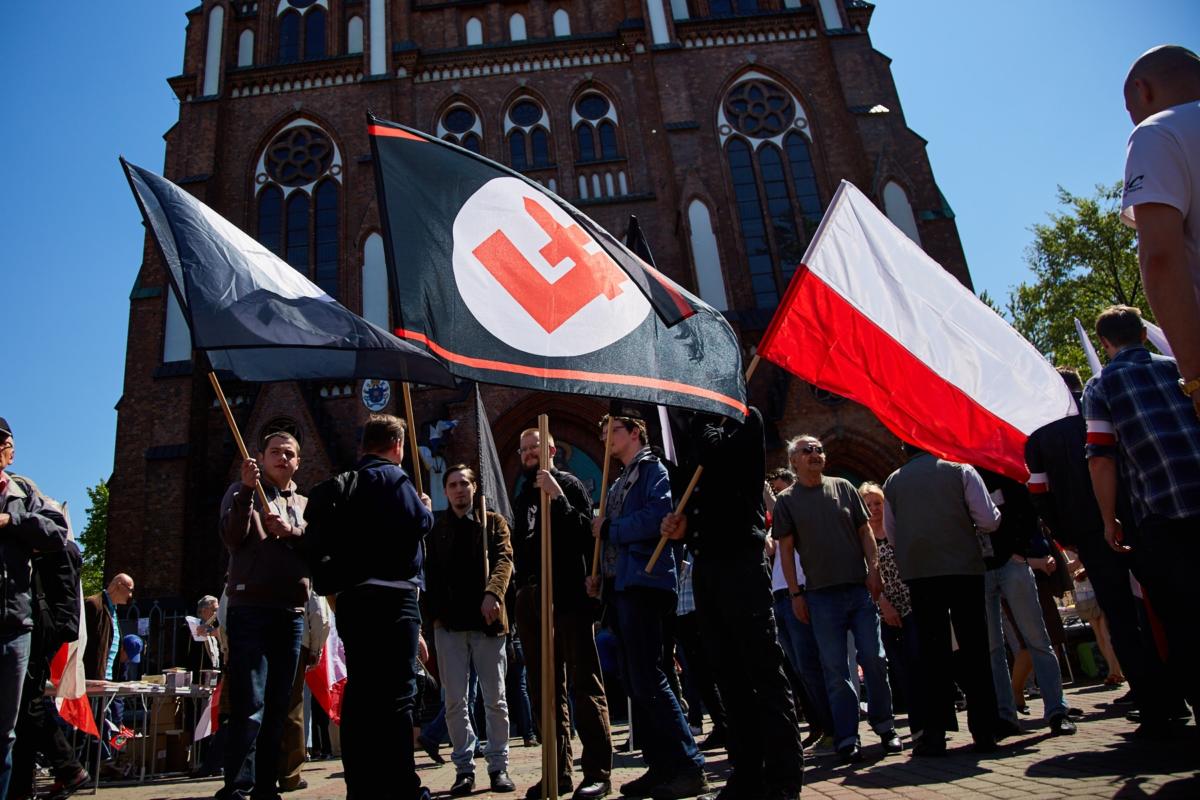


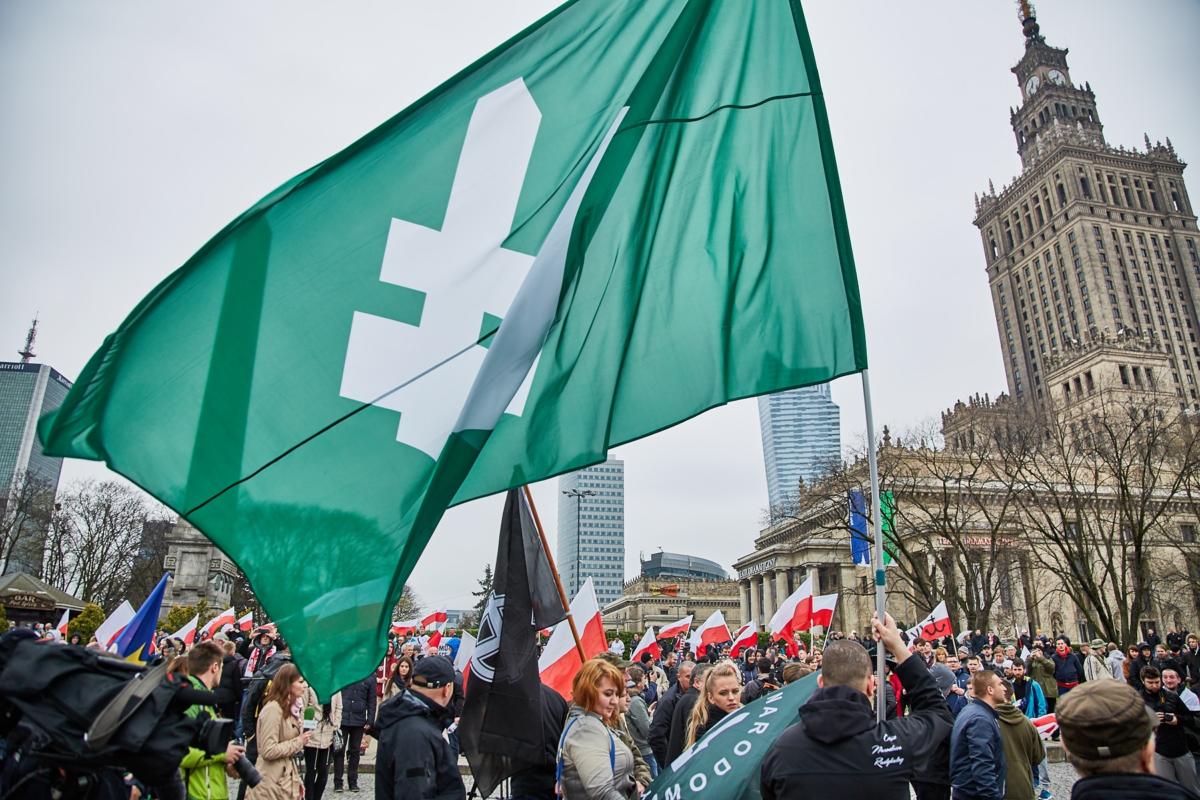

KP: Who is your intended audience, are they ever in opposition?
TR: I try not to block the possibility of posting comments regarding my films. However, you can find comments that are published both by my supporters and opponents. I have noticed that over time the comments have become more emotional and aggressive, especially by the right-wing.
KP: Usually, artists show their works only in galleries. Why publish your videos on the internet?
TR: From the very beginning, I tried to avoid the space of the gallery and for the first three or four years this project was not shown at all in art institutions. This changed in 2011, when I won the Oskar Čepan award, an award for young artists up to 35 years old. After the award, the project began to arouse the interest of curators. On the other hand, the publication of films on the internet was important to me because it provoked reactions and discussions. I also tried to translate the statements of people appearing in films by preparing English subtitles for them.
It all started with a football match with Roma children, played at the segregation wall. The city authorities, after erecting the wall, decided to promote it as a “sport wall,” a kind of training tool with which you can practice various sports. I wanted to somehow ridicule this absurd situation, so I covered this wall with nonsense graphic sports motifs.
KP: How do you process and edit your films? Do you have a particular method?
TR: I do not publish non-edited film recordings on the web. It usually takes a few days to assemble the footage and I need some time before I start processing the film material. So it is neither streaming nor documentary – when it comes to production and time management, I am somewhere in between. It seems to me that my short documentary films arouse curiosity because of their subject.
KP: Your exhibition Paradox of Tolerance is taking place now at Kunsthalle Bratislava. What is presented at this exhibition?
TR: It was a selection of films referring to the events from 2017, including some older productions; some of which have not been shown yet, edited especially for the exhibition.
KP: What are in those films?
TR: Some included footage of demonstrations of extreme right-wing groups organized by the People’s Party – Our Slovakia, led by Marian Kotleba. It was aimed against refugees and was initially set to take march right into an actual refugee camp, but demonstrators were not allowed in by the police. In the films presented at the Kunsthalle, you can also see the projects that I carried out together with the Roma – painting workshops I normally do in the summer in Roma settlements in the east of Slovakia.
KP: Did the city authorities react to it somehow?
TR: After playing the match, I went to the municipality hall and suggested that I would put the photographs on this wall. What kind of photographs?, they asked. I replied that it was supposed to be a selection of photographs illustrating the course of the match that I played with Roma children. This proposal, however, did not gain the approval of the authorities. After a few days, I contacted the city hall officials again explaining that I would like to reach agreement with them in order to jointly determine the details of this painting. So, we began to negotiate about what this mural should look like. Eventually, I got a few guidelines from officials, according to which the mural should not present any people. I was also informed that I should finally remove the representations of children and of the whole surrounding area from the painting because it is ugly, and so on. Since it turned out that finally nothing was left of the original scene depicted in the photograph, I decided to put a rainbow in the background of the photograph along with the human figures playing football. Although it seems like a rather absurd solution, this project was immediately accepted. We were able to stick to the wall a large print in this form. We were using this motif also while painting other “sports walls” in Slovakia.
When I finished the project related to the murals, I decided to carry out painting workshops for children from Roma settlements. Together with a group of friends, I created a non-governmental organization called Art Aktivista, whose main task is to continue cooperation with the Roma community.
KP: Where exactly?
TR: In Ostrovany, Sečovce, and in the village of Veľká Ida located in the Košice district. In the last place, however, it was really difficult to carry out my proposal of painting the rainbow on the wall. I heard that the project is too colorful and therefore racist. The rainbow was supposed to suggest that there were colored people on the other side of it. But since I already had experience in negotiating with the authorities, I asked them for the suggestions regarding the possible modification of this project. The mayor demanded that fewer colors be used, specifically that the rainbow should consist of only blue and green. I suggested that it might also include red circles, for example. Surprisingly the mayor did not mind, so we managed to finally paint the wall in blue and green stripes and red circles – that is, the Romani flag. The paradox of this situation consisted in the fact that I would never get permission of the authorities if I have honestly informed them that I wanted to paint a Romanian flag on the wall. It was the last wall I painted.
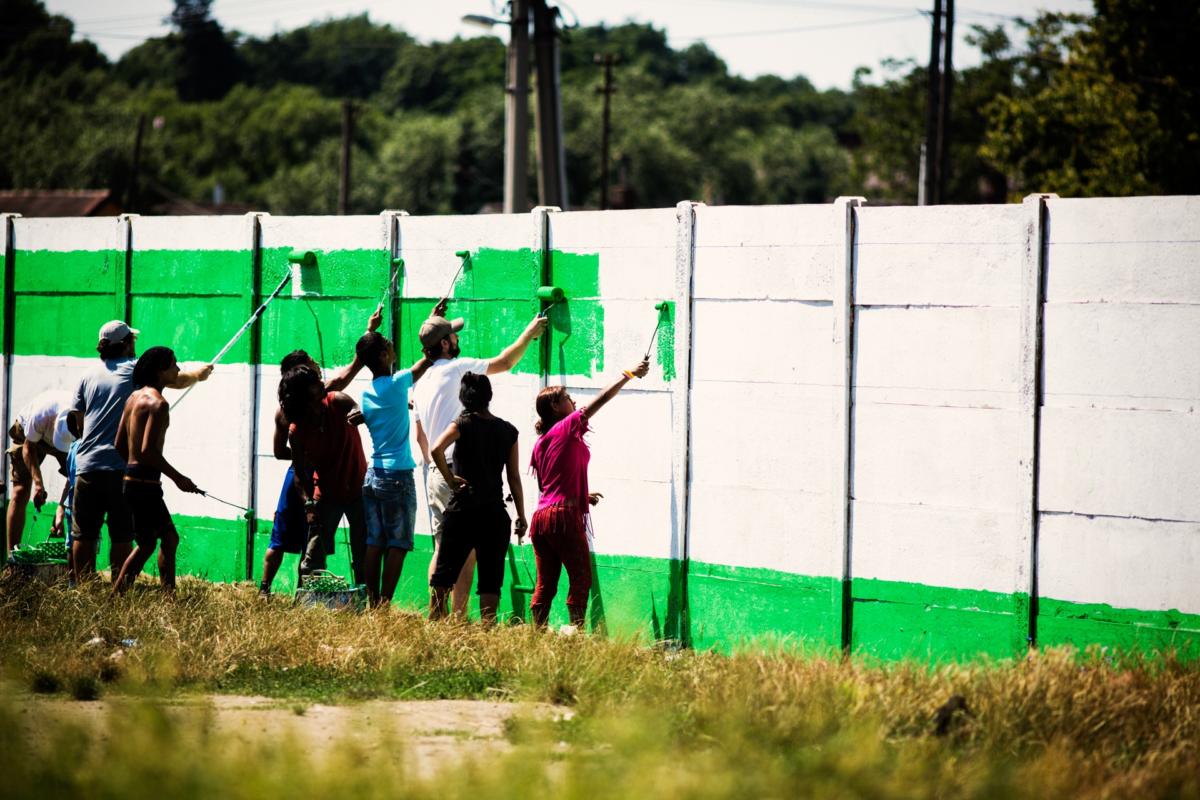




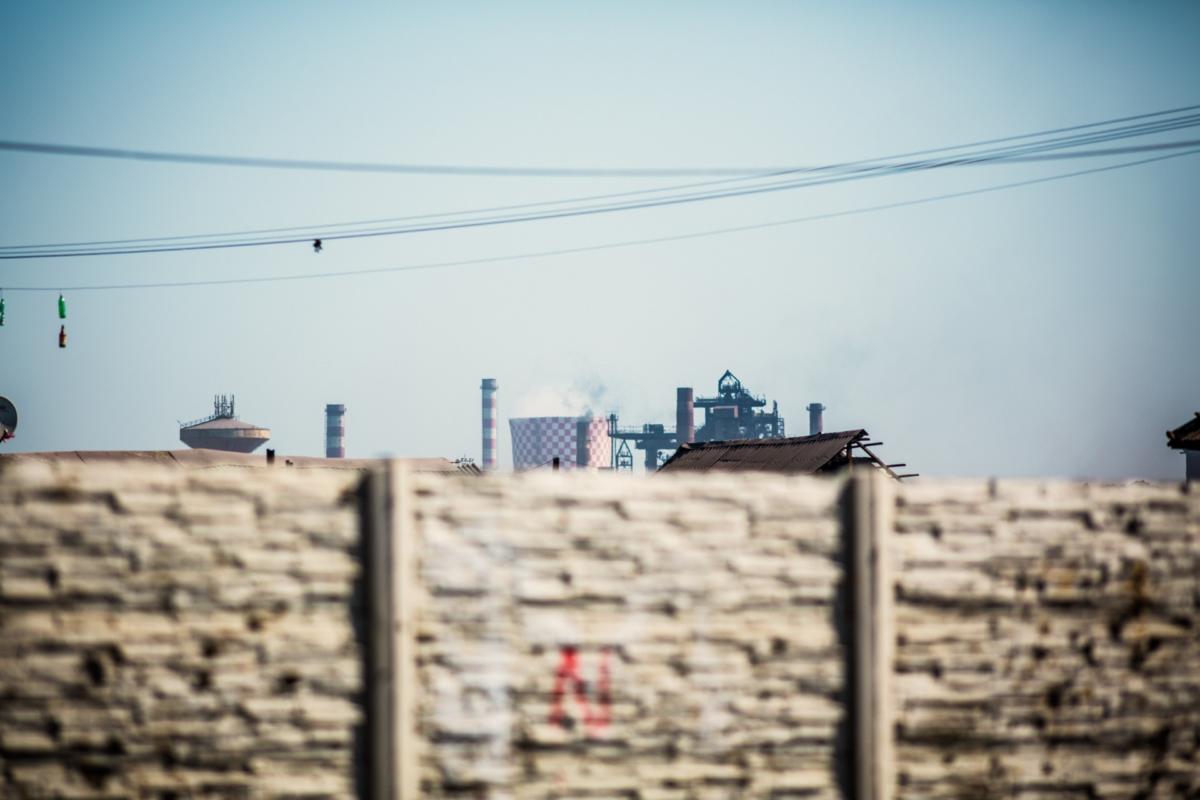
KP: How many segregation walls are there in Slovakia?
TR: There are thirteen walls.
KP: The Roma people constitute an important theme of your films. What is the origin of your interest in this minority group? How does your cooperation with them take form?
TR: As I mentioned, it all started with a football match with Roma children, played at the segregation wall. The city authorities, after erecting the wall, decided to promote it as a “sport wall,” a kind of training tool with which you can practice various sports. I wanted to somehow ridicule this absurd situation, so I covered this wall with nonsense graphic sports motifs.
KP: You are enrolled in Art Aktivista NGO. Could you tell me something about this organization?
TR: When I finished the project related to the murals, I decided to carry out painting workshops for children from Roma settlements. Together with a group of friends, I created a non-governmental organization called Art Aktivista, whose main task is to continue cooperation with the Roma community. We have completed projects such as the revitalization of one of the staircases on the Roma housing estate. This staircase has been refreshed and renovated by the residents of the block, mainly by children. Film documentation of this event can be viewed on the internet. Over the last three years, the key part of our activities was providing children with a 10 x 10 meter large canvas. After some time, we were withdrawing from these activity, so that it was moderated only by the reality itself. When the painting was finished we were organizing vernissages – we hung canvases on the external walls of residential blocks and everyone had the opportunity to see them. These are undoubtedly extraordinary events from the point of view of the inhabitants of these settlements.

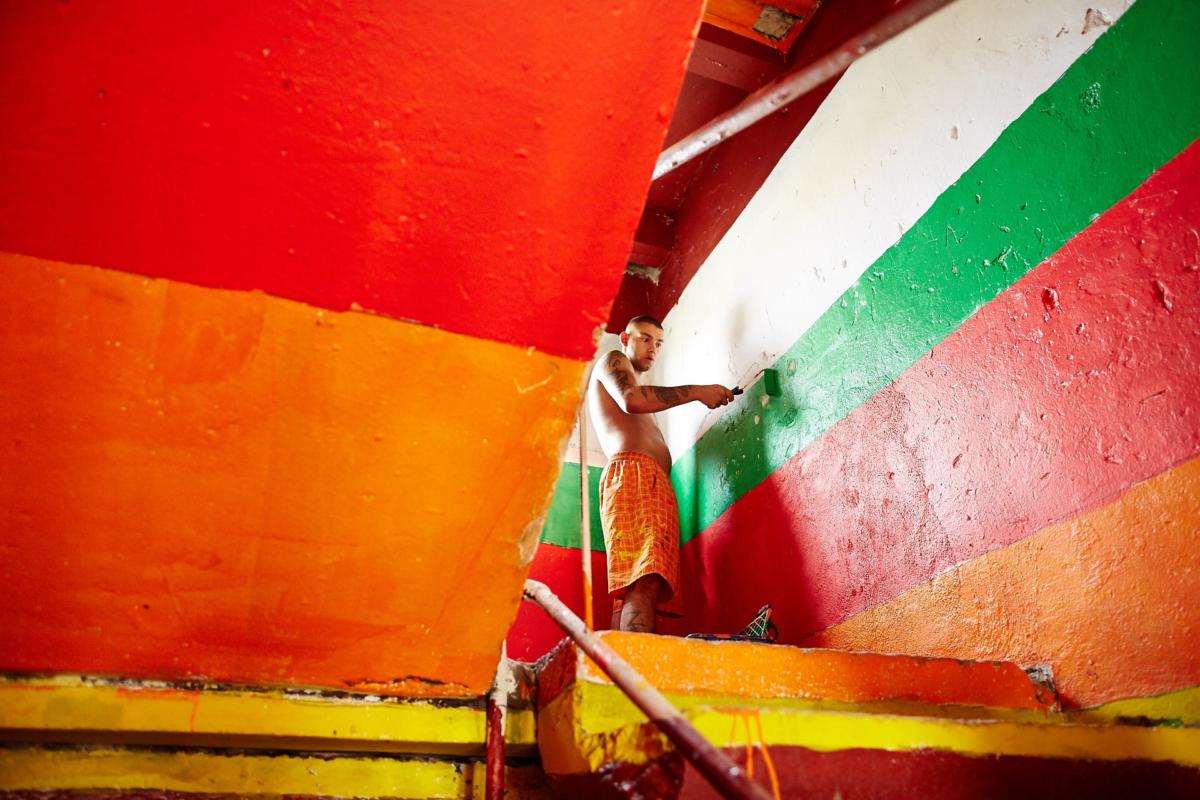
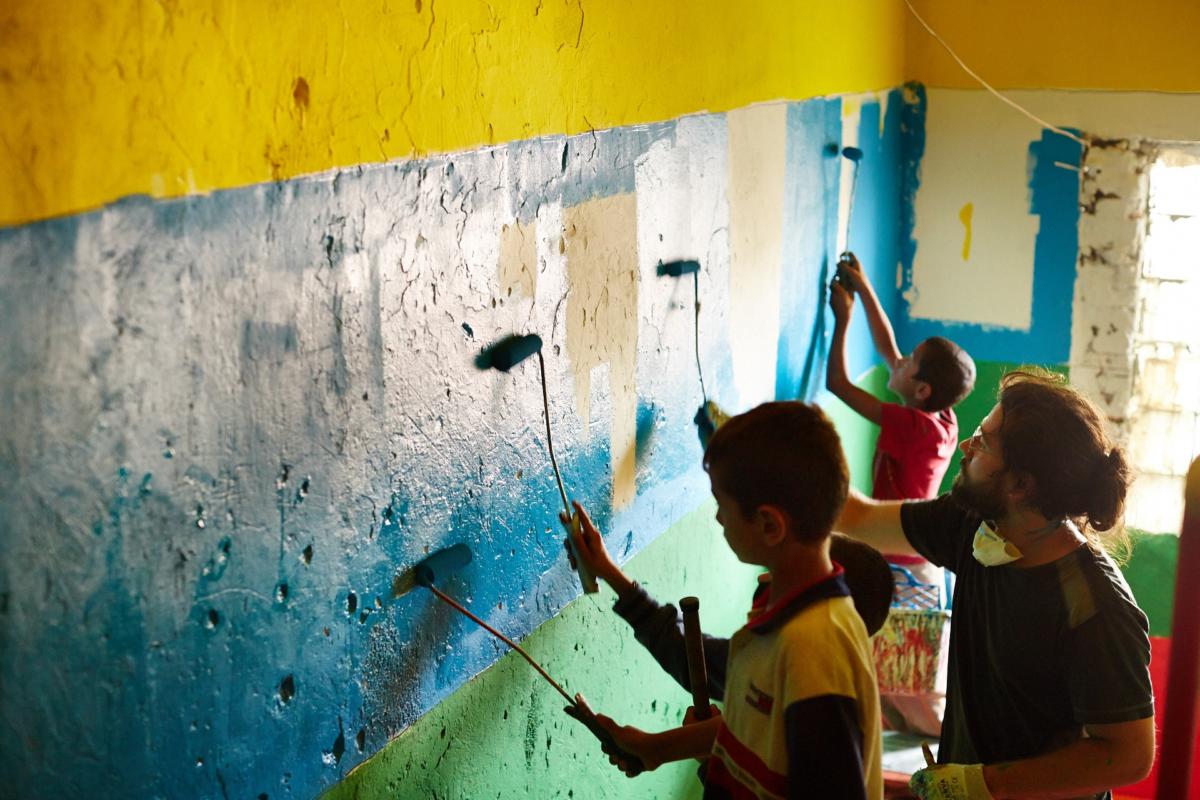

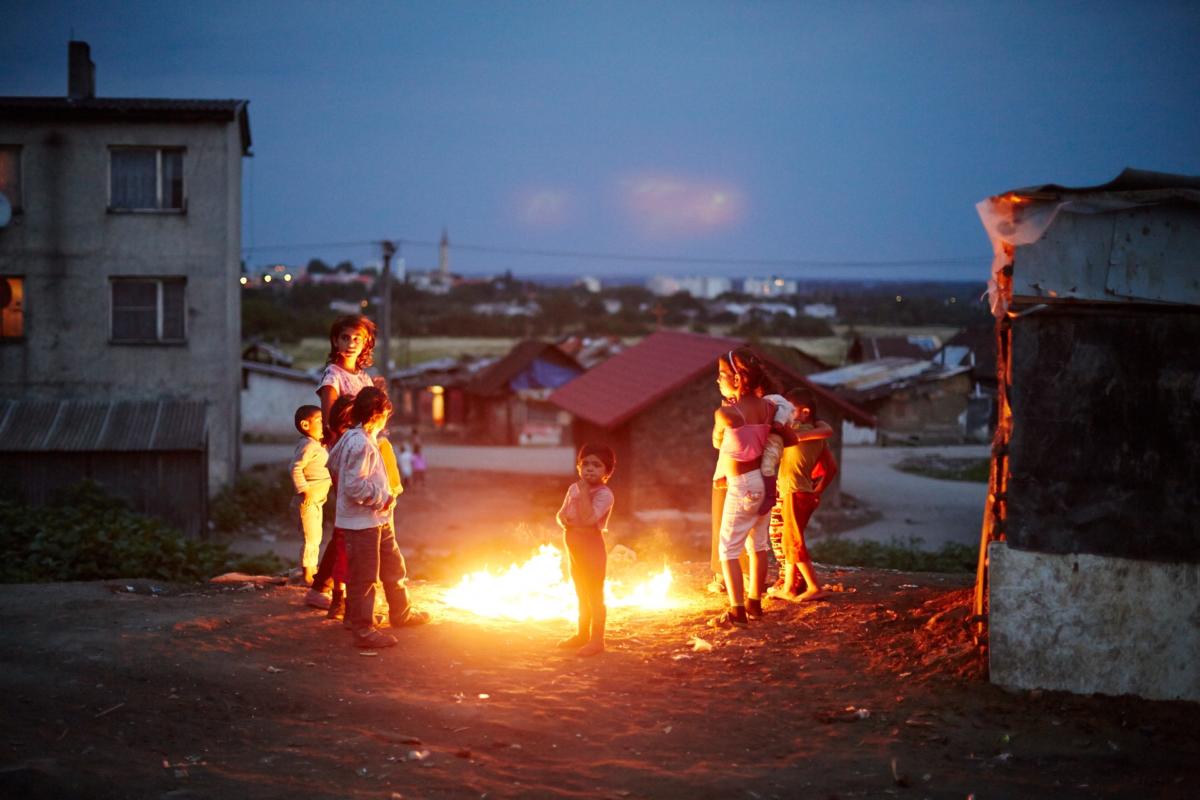
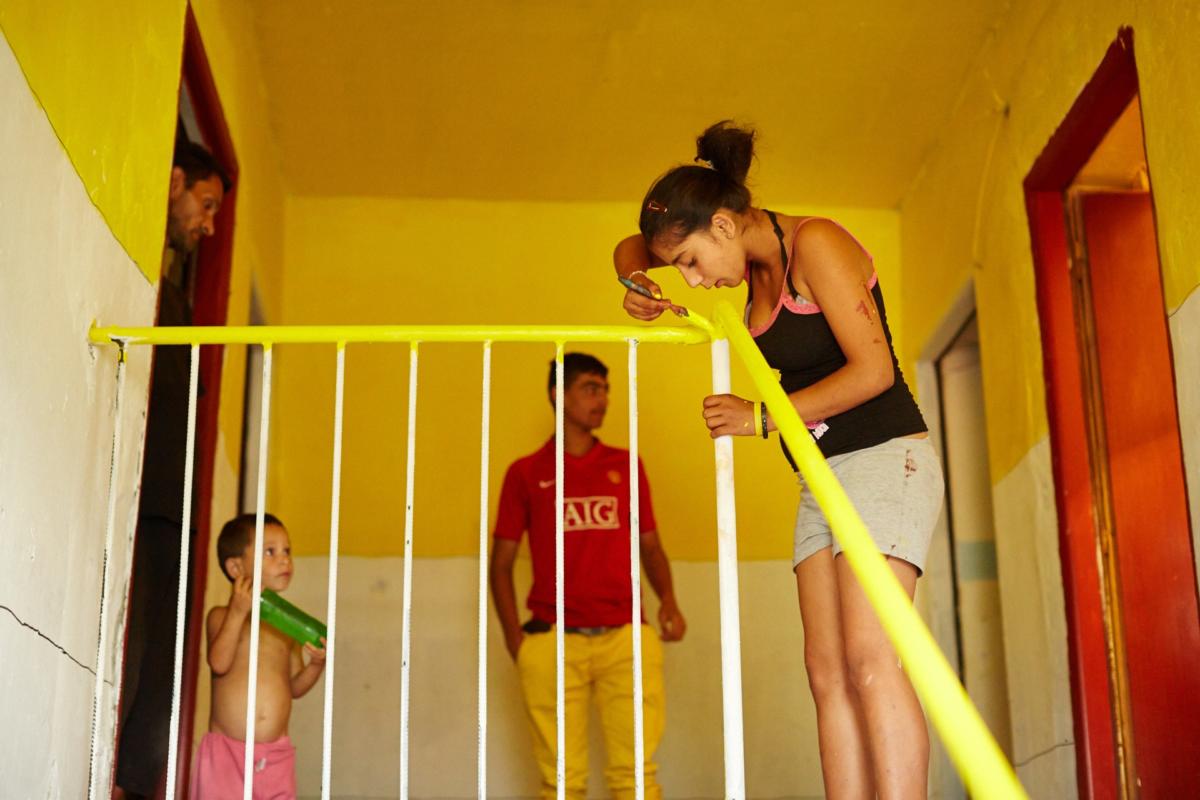
KP: Is it easy to win their trust? What was their reaction to some of your activities, such as painting “football” motives or rainbow motifs on the segregation walls?
TR: The basis of this workshop, i.e. working together, is premised first and foremost on having fun together, initiating conversations, making the children happy. They like painting because they can play with colors and they have the opportunity to do something they have not experienced yet. But it is pictures and videos that play a key role in revealing the hidden meanings of these activities. Thanks to cooperation with prof. Grzegorz Kowalski, I acquired skills related to conducting workshops–I took part in such workshops made up by Kowalski as called Common area, my own area–which were really useful for my cooperation with Roma. According to this experience, during the workshop, we first arrange the situation, and then we withdraw from it, giving the participants freedom to act independently. Thanks to this, our workshops have a unique character and always differ from one another, although we prepare them in a similar way every year. In the last two years, we have also started using geometric objects, cubes, circles, which evoke very positive reactions among kids who use them to create compositions of all kinds. Objects and elements are available in different sizes, some are small, while others are, for example, four square meters.
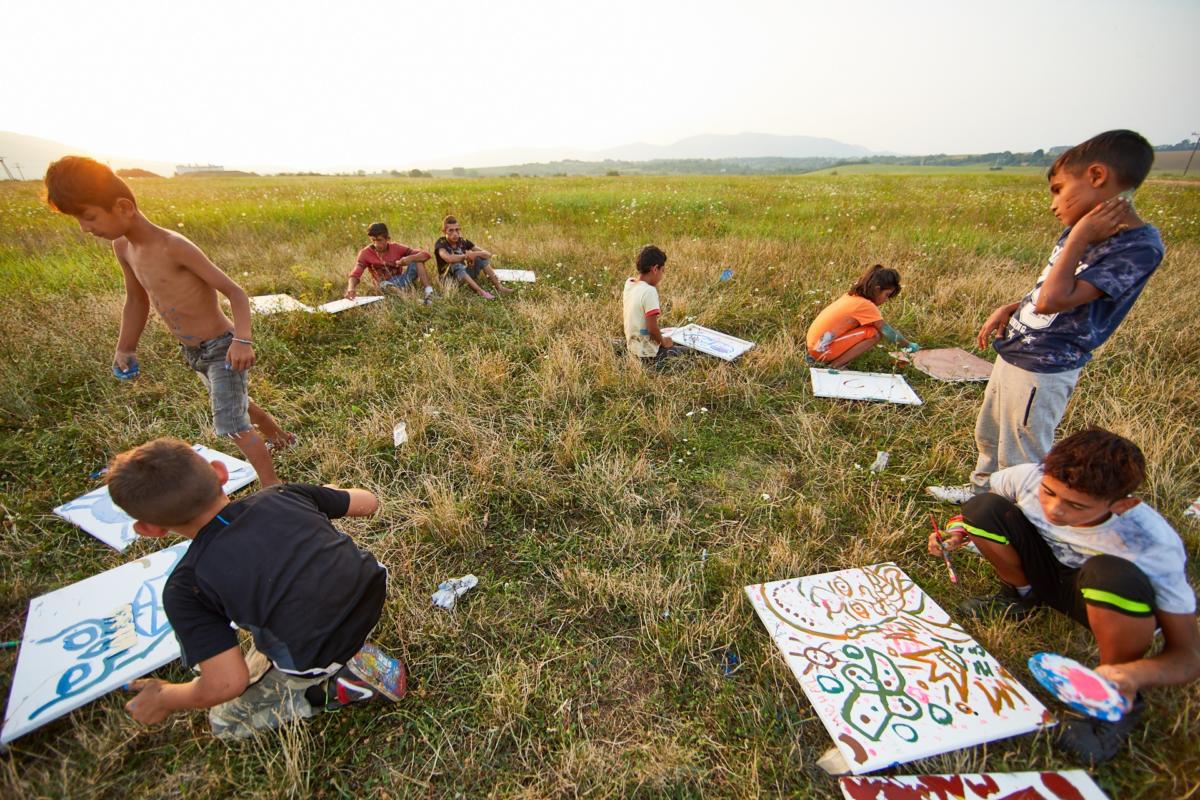
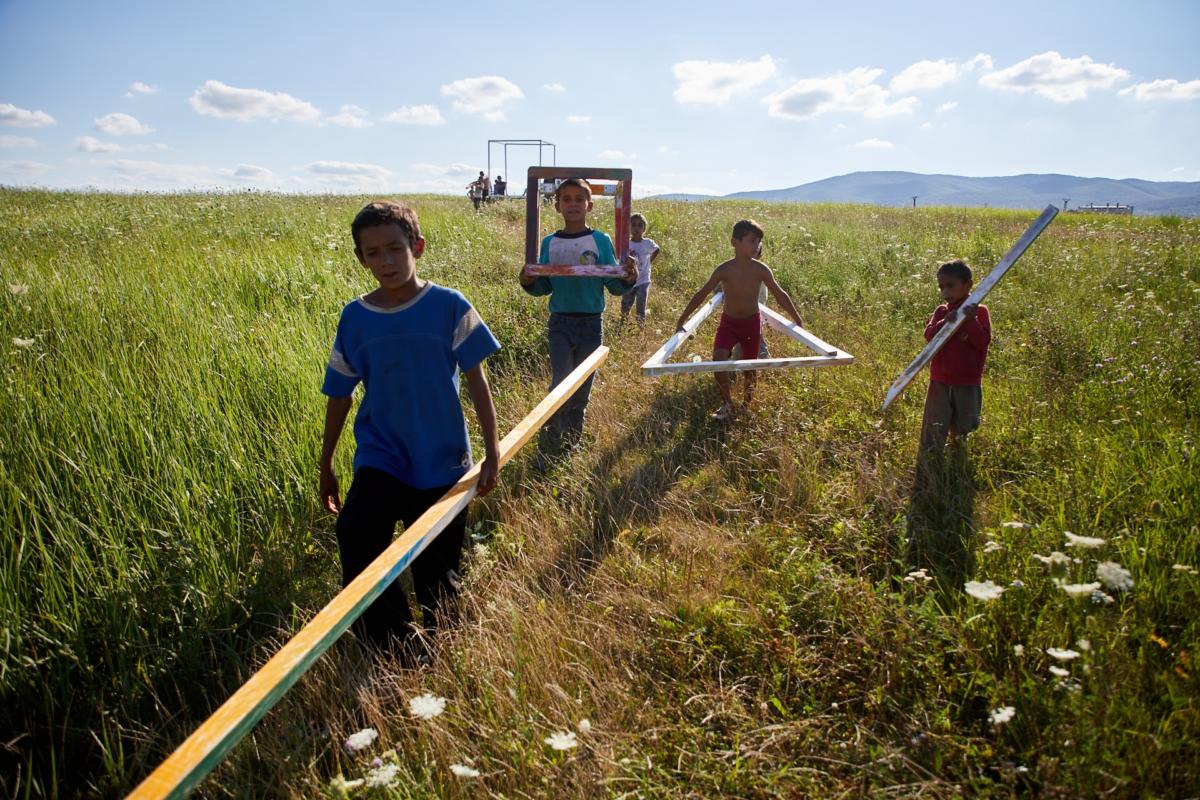


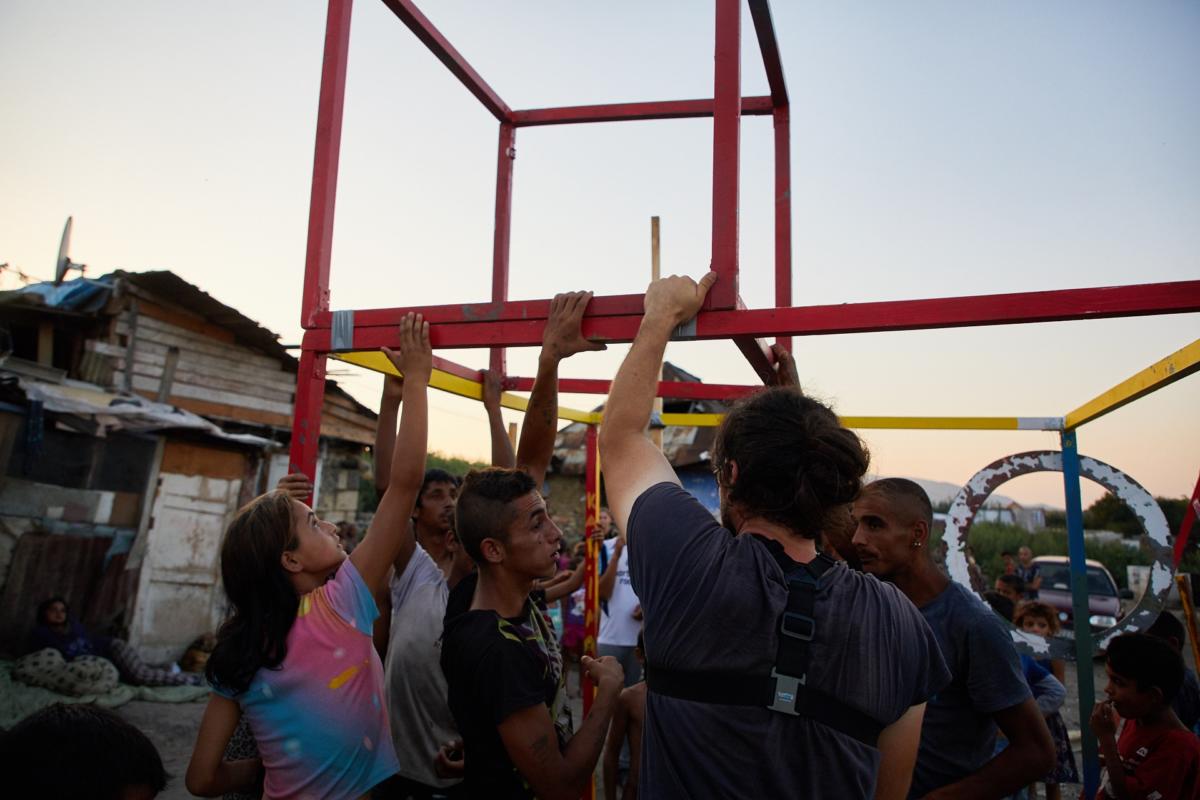

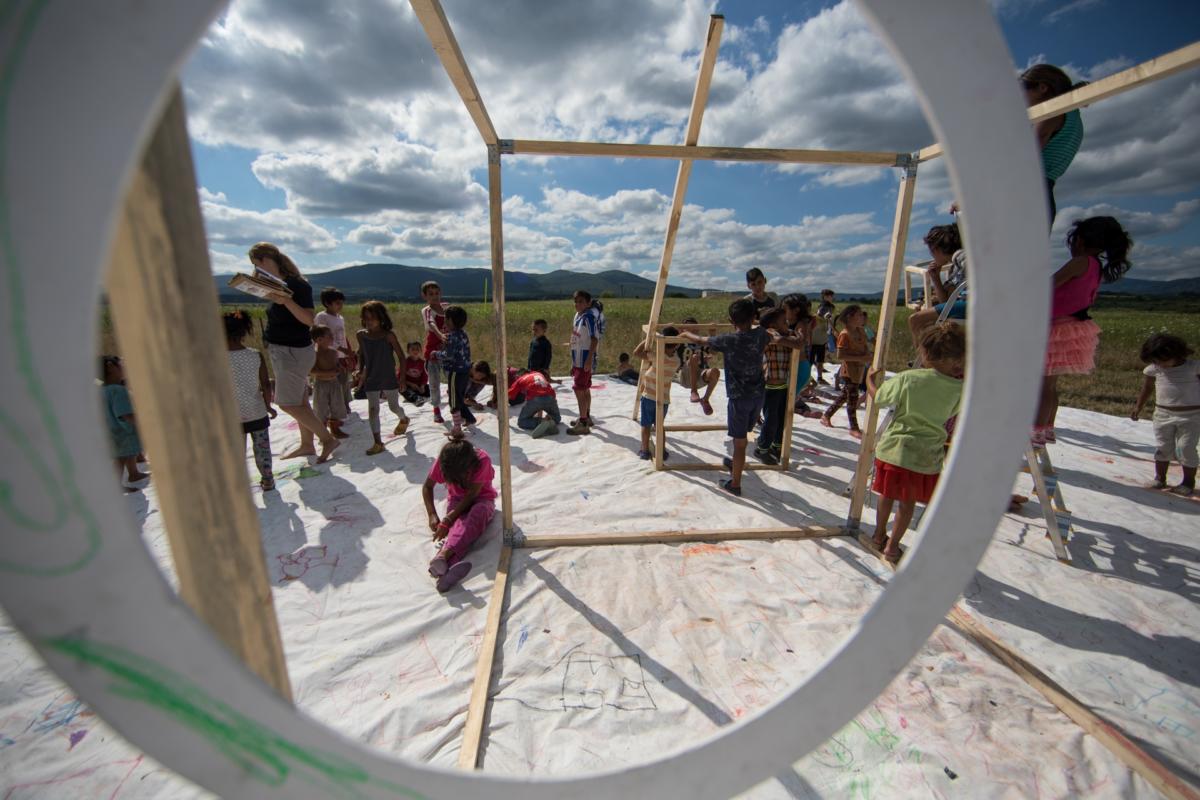

KP: What are you doing with these objects?
TR: It’s the children who decide. If they want to paint them, they paint them, they can roll them, hang them, glue them together. Acting within the conceptual space of an artistic process, they are able to create even mini-houses for themselves. This is, of course, reflected in the films, which I have made over the last two years.
KP: You’ve been working in Poland for quite a long time, you’ve had the opportunity to follow various key events of the local political scene. Do you have any thoughts on what is happening in Poland today?
TR: I remember quite well the first Equality Parade, which I participated in in Poland, it was in 2010, and which I documented. During this parade, there was a clash with crowds of right-wing extremists, because at the same time the Grunwaldzki March was organized. Later, the Independence March in 2012 was another equally intense event during which blockades and counter-march manifestations were also organized.
I am not planning to finish anytime soon. There are so many interesting things happening now that it is difficult to refrain from observing them, the political situation is getting worse, racism and xenophobia are on the rise, the emotions accompanying various street events are also more and more intense.
KP: Did you talk to the participants of these marches?
TR: No, but after some time, the more I entered the crowd, the harder it was to avoid interaction. I gained experience about learning how to behave in such situations and how to maintain a sense of professional detachment.
KP: I am also wondering to what extent you are following current events in Slovakia. Have you participated in the anti-government protests in Bratislava that broke out after the murder of Ján Kuciak?
TR: Yes, one could feel that it was an extraordinary situation, so I decided to go there immediately. They were the largest protests in the history of independent Slovakia (since 1993). People today want changes in the functioning of the state. They are fed up with clientelism, corruption, they demand independent courts and police.
KP: What did the protests look like from inside?
TR: I am working now on a film about it. But as I said, I usually give myself a few weeks for editing. I need to distance myself from these events in order to make sense of them.
KP: What projects are you currently working on?
TR: I am traveling across Eastern Europe searching for topics. I was planning to go to Budapest recently to watch the protests after the elections. However, it is difficult to reconcile all my plans, because interesting events are taking place all around us, almost all the time.
KP: How long do you intend to work with film documentation of political events?
TR: I am not planning to finish anytime soon. There are so many interesting things happening now that it is difficult to refrain from observing them, the political situation is getting worse, racism and xenophobia are on the rise, the emotions accompanying various street events are also more and more intense. It’s possible I think that all of this is heading for some great climax. That is the history, after all.
